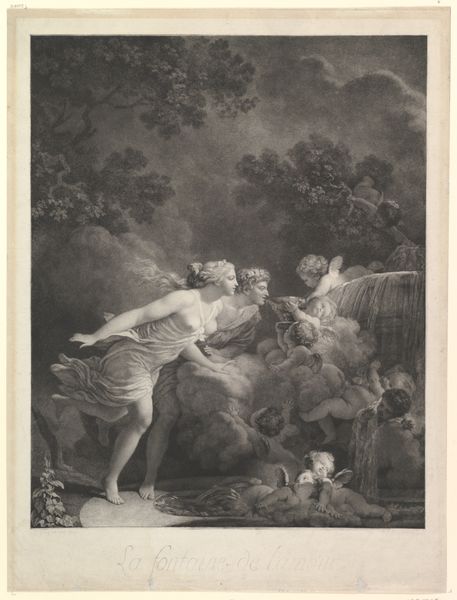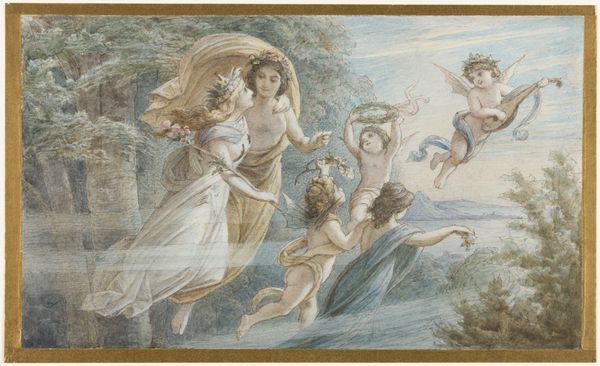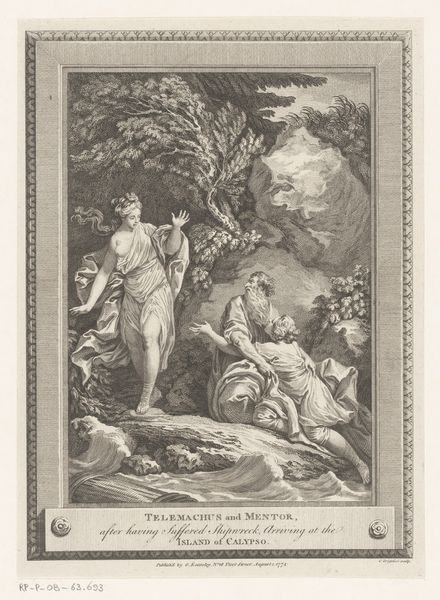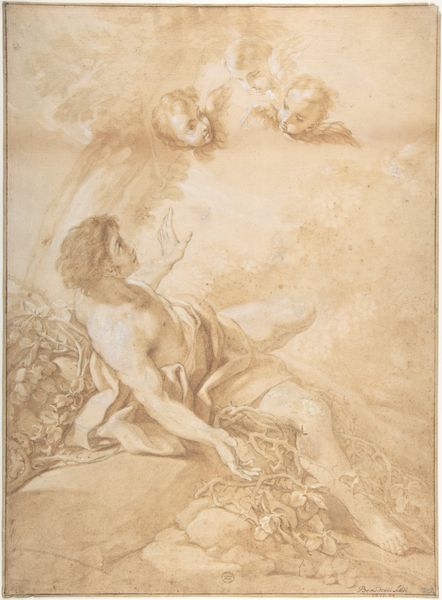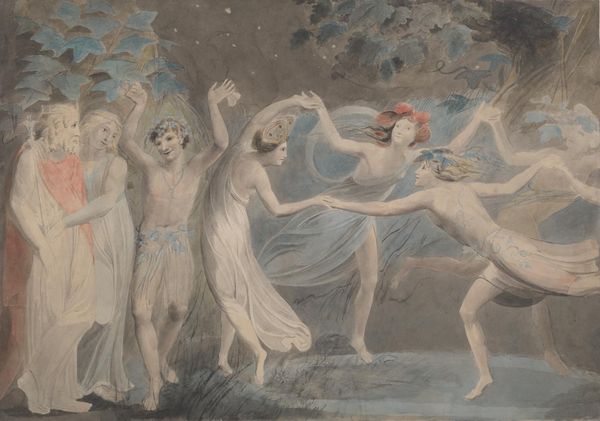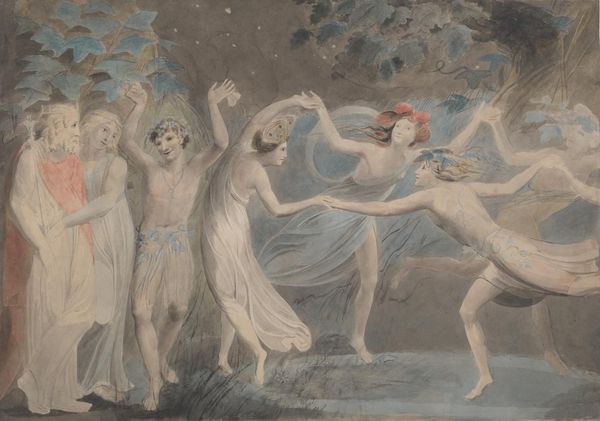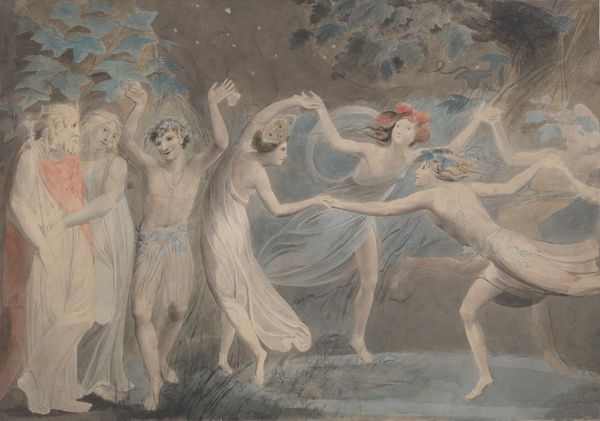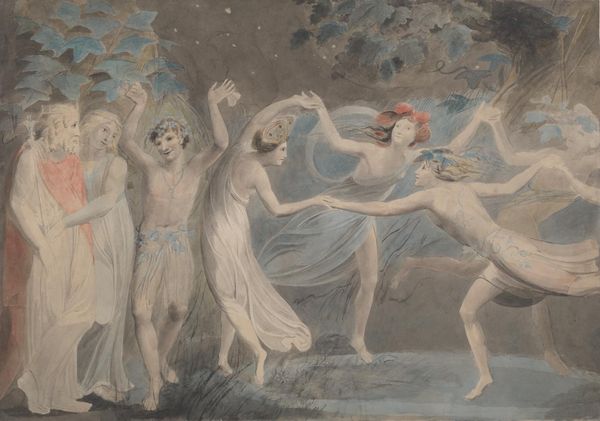
Dimensions: Image: 10 3/8 × 7 1/4 in. (26.3 × 18.4 cm) trimmed
Copyright: Public Domain
Curator: This is Jean-Baptiste Audebert's "La Fontaine d'Amour," dating roughly between 1745 and 1947. The medium is watercolor, part drawing, part print, currently held here at the Metropolitan Museum of Art. Editor: Oh, it's a flurry of cherubic energy and muted, almost dreamy watercolors! Very Rococo with a side of... nymphs in a hurry? Is that a love fountain vomiting up toddlers? Curator: Note the production; a combined approach speaks to a fluidity within the traditional hierarchies of artmaking itself, moving between reproducible printmaking and the unique, singular watercolor stroke. Editor: It definitely gives it a breezy, ethereal feel. I'm getting hints of eroticism wrapped up in allegory; the nymphs almost seem to flee a bit, but the landscape teems with symbols. All this chubby nakedness reminds me a bit of trying to shop for baby clothes. Overwhelming, truly. Curator: Exactly, it showcases a burgeoning commodification of the body, packaged within mythological frameworks designed for elite consumption. The question of "love" and its relationship to commercial exchange emerges prominently when examining these contexts of Rococo artistic production. How are the raw materials sourced? What labor creates these pigment for the fantasy? Editor: I never considered pigment origins viewing naked nymphs. I guess the artist, Audebert, throws these all together into a romantic escapade. The pastel shades, the hurried poses... it's less about craftsmanship in my estimation, more about conjuring a mood—a very "frantic putti chasing goddesses" kind of mood. Is that taste I detect? The kind a social climber might use to adorn a vanity? Curator: Taste is exactly where societal value gets codified; it's embedded deeply within the choices of line and colour that Audebert renders. Here you're able to almost taste that era's definition and aspirations toward “erotic love”. These symbols, the way they reflect material culture in that precise moment. Editor: It's fun. Perhaps the question posed is this, why isn't love always depicted as frantic chubby cherubs trying to get your attention as you’re running away. Okay. All this aside. Next artwork. Curator: Right, onwards, the implications for understanding the socioeconomic construction of fantasy run deep!
Comments
No comments
Be the first to comment and join the conversation on the ultimate creative platform.
